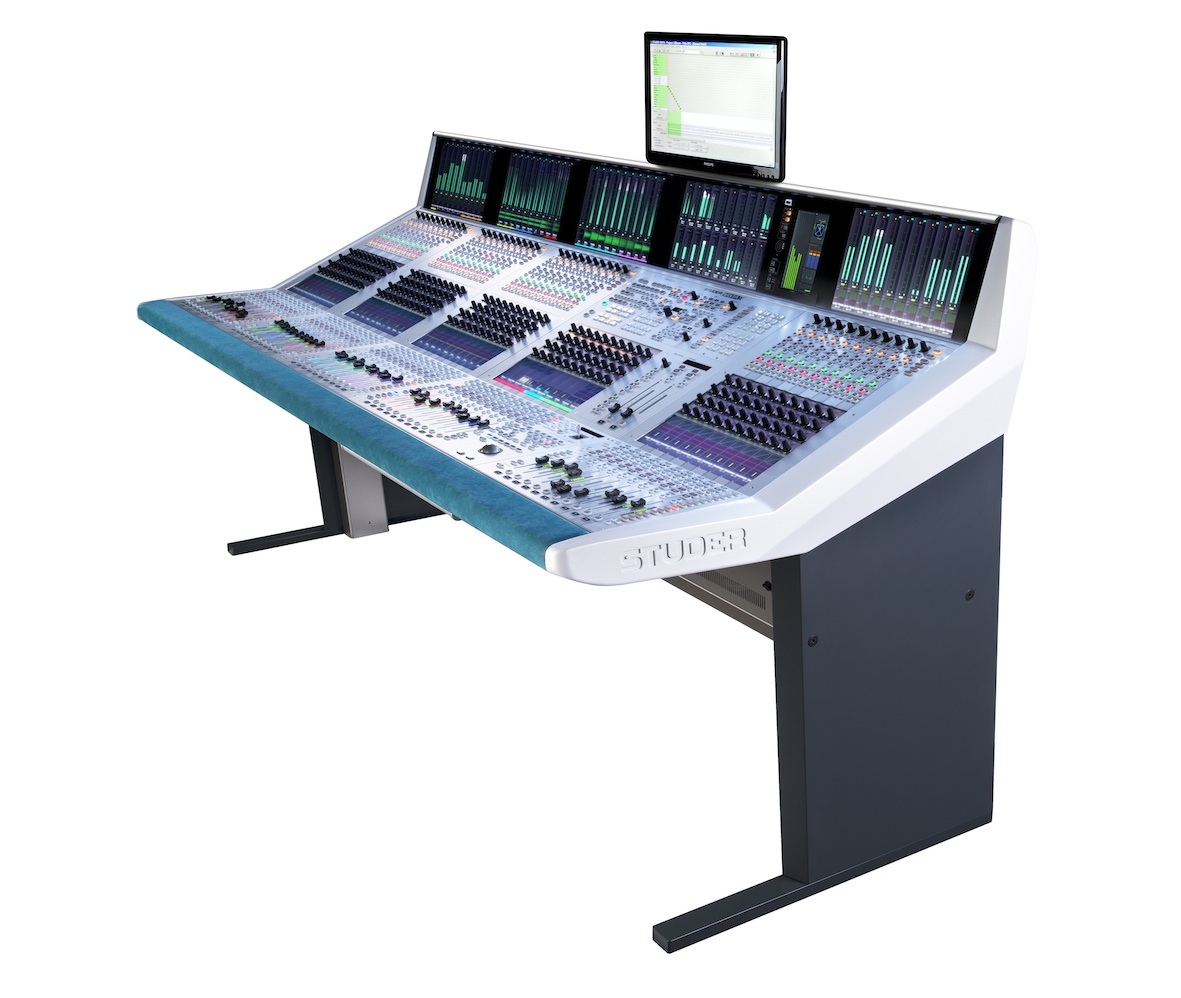
NAMM 2014: STUDER, TO INFINITY & BEYOND
Studer’s Vista consoles have been the choice of the production mixing elite for some time now. Studer figured out how to use touchscreens in a particularly intuitive manner – dubbed Vistonics and borrowed by some of the high-end Soundcraft designs — and the use of coloured LEDs to help solve the assignability knobs/faders conundrum (again, borrowed by Soundcraft). The latest Vista console has now introduced a new processing engine — using CPU-based processors. The idea here is that SHARC chips are getting long in the tooth (arf!), and FPGA, although plenty powerful enough, are very difficult to program for. Meanwhile, the ‘Infinity’ DSP core, which uses CPU-based processors, combines the best of both words, providing huge numbers of DSP channels for large-scale, high-resolution audio processing and mixing. How ‘large scale’? Studer reckons it squeezed 800 audio channels from a single CPU-based board. This offers significant advantages, as CPU processing provides a scalable system, faster development of new signal processing designs, huge channel counts, full system redundancy without a single point of failure and the possibility of running third-party algorithms. The new Infinity DSP engine provides 12 A-Link high-capacity fibre digital audio interfaces, providing more than 5000 inputs and outputs. A newly designed high-density I/O system – D23m, is used to break out these A-Link connections to standard analogue, digital and video interfaces. The A-Link interface also provides direct connection to the Riedel MediorNet distributed router, allowing many Infinity systems to be connected together with router capacities of 10,000 square or more.
Australian Distributor: Jands (02) 9582 0909 www.jands.com.au

















RESPONSES